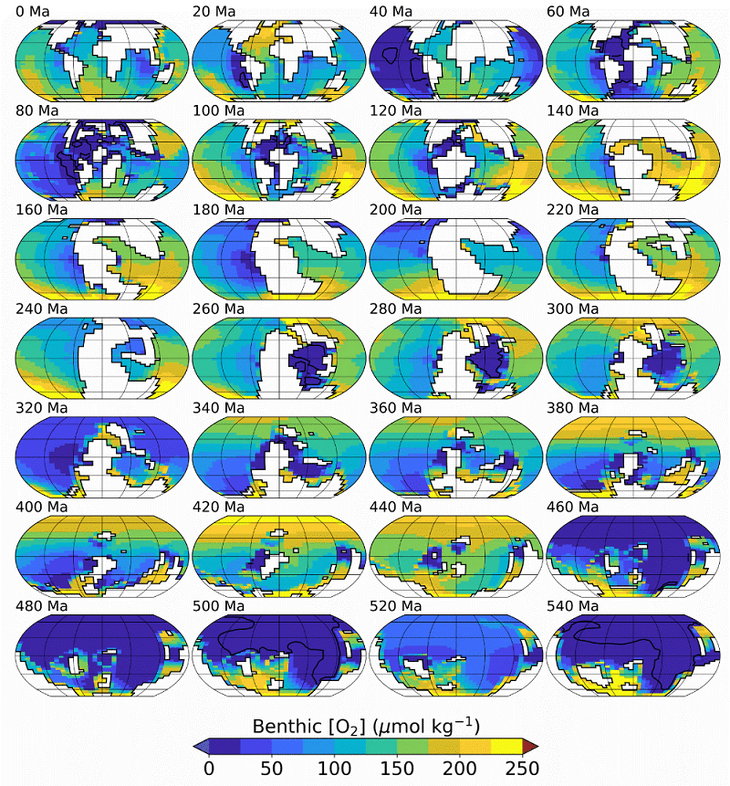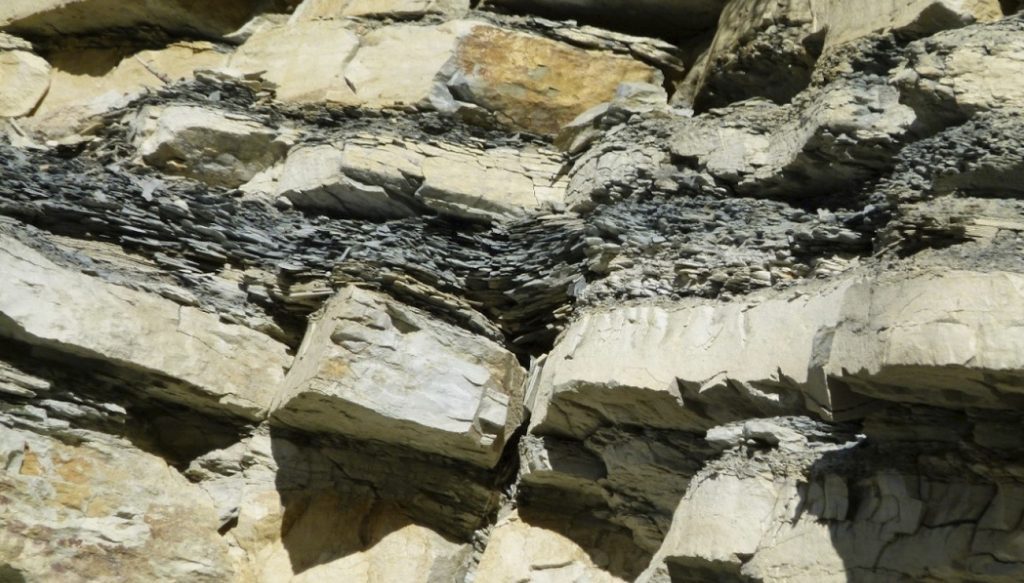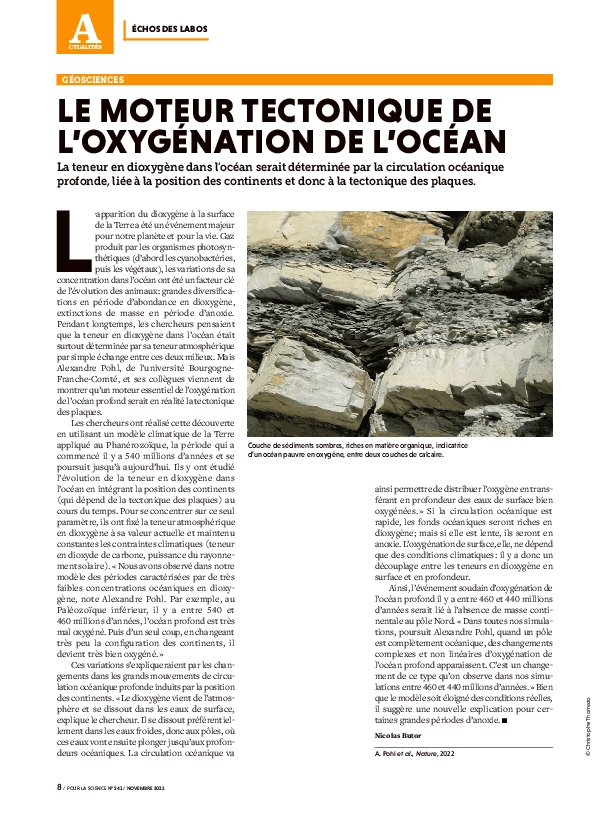The appearance of oxygen on the Earth’s surface was a major event for our planet and for life. This gas produced by photosynthetic organisms (first cyanobacteria, then plants) is consumed by the respiration of other organisms. Differences in the concentration of oxygen in the ocean have been a major factor in animal evolution (diversification in times of abundance and mass extinctions in times of hypoxia). For a long time, researchers believed that the oxygen content (O2) the ocean is mainly determined by the atmosphere, by the simple exchange between the two mediums. But the latest work by Alexandre Paul of the University of Bourgogne-Franch-Comte and his colleagues suggests that the main driver of oxygen in the deep ocean is actually plate tectonics.
The researchers highlighted this phenomenon using a climate model of the Earth applied to the eons of life (from -540 million years ago until today). They studied the evolution of the ocean’s oxygen content by incorporating the location of the continents over time, which depends on plate tectonics. To characterize the effect of this single parameter, they fixed the atmospheric oxygen content at its present value and kept the climatic constraints constant (CO2 content and solar radiation strength). Then Alexander Paul and his colleagues noticed, with amazement, large differences in the concentration of oxygen in the depths of the ocean: “ In our model periods, we observed a severe decrease in ocean oxygenation. For example, in the Lower Paleozoic, between 540 and 460 million years ago, the depths of the ocean were very poor in oxygen. Then suddenly, as the composition of the continents changes slightly, it becomes well oxygenated. »
These differences can be explained by modifications to the major currents in the deep ocean caused by the location of the continents. “The oxygen comes from the atmosphere and dissolves in the surface waters,” explains Alexander Ball. It prefers to dissolve in cold water, at the poles, as this water then sinks into the depths. Thus, the circulation of the deep oceans will make it possible to distribute oxygen. » If the ocean circulation was fast, the ocean floor would be rich in oxygen; But if it is slow, they will be in a state of hypoxia. Surface oxygenation depends only on climatic conditions: so there is a separation between the content of dioxygen at the surface and at depth.
For example, the abrupt event of oxygen in the deep ocean between 460 and 440 million years may be related to the absence of a continental mass in the Arctic: “In all our simulations, Alexander Poole continues, when one of the poles is completely oceanic, complex and unrelated differences emerge Linear oxygenation in the deep ocean. »

Simulation of ocean floor oxygen content at different times as a function of continental drift.
© Alexander Pol
These results have several implications. First, the researcher asserts, “Although it is very far from realistic conditions, the model offers a new interpretation of real events, such as the great hypoxia of the Lower Paleozoic.” Next, this work shows that ocean hypoxia is not necessarily associated with lower atmospheric oxygen concentrations. So we cannot directly reconstruct atmospheric oxygenation from ocean oxygenation observed in geological data. Finally, they revealed an unexpected effect of plate tectonics on Evolution of oxygen-dependent marine organisms.Even if this mechanism affects only the deep ocean, it may have consequences for global biodiversity.Under certain conditions, oxygen deficiency restores the availability of minerals by enhancing their solubility.But then it can They become toxic to marine life.” “Such a mechanism is thought to have played, for example, a role in the mass extinction at the end of the Ordovician, 445 million years ago,” Alexander Paul concludes.

“Music guru. Incurable web practitioner. Thinker. Lifelong zombie junkie. Tv buff. Typical organizer. Evil beer scholar.”







More Stories
A large manufacturing project awaits space in the industrial zone
According to science, here are officially the two most beautiful first names in the world
Green space, 100% pedestrianized: DIX30 reinvents itself